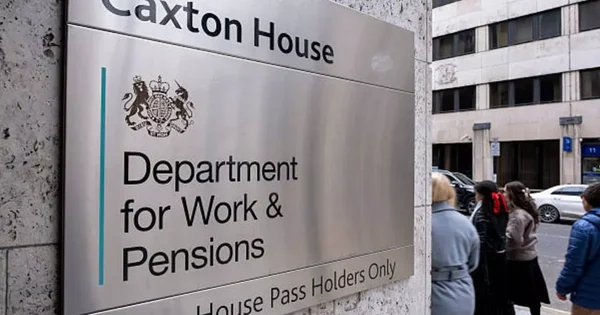Confused by HMRC’s payment on account demands landing in your inbox? You’re definitely not alone here, as most self-employed folks get thrown by these advance tax payments the result of HMRC’s assessment system, which is the framework used to calculate tax liabilities and determine payments on account.
Payment on account catches many people off guard since it means paying tax before you’ve even sorted your annual return. This applies to self-employed folks, including sole tradersself-employed individuals who run their own business and are responsible for managing their finances and tax obligations. The good news is that once you understand the basics, it becomes much easier to handle.
In this article, we’ll cover everything about payment on account rules, calculations, and those all-important deadlines. Additionally, we’ll explain when you can reduce payments and what happens if you’re late.
What exactly is Payment On Account?
Think of payment on account as paying your tax bill in chunks throughout the year. HMRC splits your annual tax into two advance payments, which helps spread the cost instead of one massive January hit.
It’s calculated based on your previous year's tax bill, as shown in your assessment tax returns or assessment return. The system only kicks in when your previous tax bill was over £1,000. Furthermore, less than 80% of your tax must have been taxed at source through PAYE or other deductions, unlike self-assessment.
Most self-employed people and business partners face these payments, reporting their income and calculating payments through self assessment tax returns. Property landlords often get caught too, particularly when rental income forms a significant part of their earnings.
If you’re new to self-employment, you won’t pay in your first year. This gives HMRC time to establish your earning pattern before demanding advance payments.

When do you need to make these payments?
You’ll need to pay if your last self-assessment bill topped £1,000. This typically applies when most of your tax wasn’t already collected through payroll deductions.
Self-employed individuals nearly always qualify for payment on account. Business partners typically do too, along with anyone earning substantial income outside of traditional employment.
Got rental properties or earning investment income? You’ll likely be making these payments as well, since this income usually falls outside the PAYE system.
First-time self-employed individuals get a free pass for year one. However, from the next tax year, you’ll join the payment on account system if you meet the criteria. Payments will begin in the following tax year, with your first payments on account due in the following year after you start.
How does HMRC work out your payment amounts?
HMRC calculates each payment on account by taking 50% of your previous year’s total tax bill. This amount is HMRC calculated and calculated based on your previous year’s tax bill, including both income tax and National Insurance contributions. These are estimated amounts determined by HMRC to simplify the process.
Let’s say you owed £4,000 last year HMRC’s tax calculation would result in two estimated amounts of £2,000 each. These payments are based on HMRC estimates, and the amounts will appear clearly on your self-assessment statement.
Class 4 National Insurance gets bundled into these calculations too. You don’t need to calculate anything yourself, as HMRC handles all the heavy lifting automatically.
The calculation remains consistent year on year. The first payment on account is due by 31 January, and the next payment is due by 31 July. However, your payment amounts will fluctuate based on your previous year’s actual tax liability.

What are those crucial Payment Dates?
Your first payment is due by 31st January alongside your annual tax return. The second payment deadline is 31st July - mark both dates in your calendar right now.
You can make HMRC payments using several methods, including bank transfer, online banking, or by paying at your bank with a paying in slip. If you choose to pay at the bank, make sure to allow enough time for processing, as a paying in slip is required.
Miss these dates and you’ll face automatic penalties with no exceptions. Late payment interest starts ticking immediately and adds up surprisingly fast. Always ensure your payment reaches HMRC before the deadline, especially if it falls on a weekend or bank holiday, to avoid any penalties.
These deadlines stay the same every single year, providing consistency in your tax planning. Setting up a direct debit helps avoid those nasty late payment charges that catch many people out.
Many experienced self-employed individuals recommend treating these dates like any other essential business expense. Additionally, planning ahead for your HMRC payments helps you prepare for the upcoming tax year, so you won’t scramble for cash when the deadlines approach.
Can you reduce your Payment Amounts?
Yes, but only if you expect to earn significantly less this year. Submit a reduction claim through your HMRC online account by signing in to your government gateway account, or by sending the relevant form to the tax office. Be realistic with your estimates and check your latest self assessment return to inform your claim.
HMRC might investigate if your reduction seems too optimistic compared to your historical earnings. If your reduction is too low, any outstanding amount will still be due, so careful consideration is essential.
Getting it deliberately wrong can land you with penalties and interest charges. Only reduce account payments if you’re genuinely confident your income will drop substantially.
One freelance consultant I know reduced her account payments when switching from contracting to employment. However, she kept detailed records showing her projected income drop to justify the reduction.

What happens when you pay late?
A £100 penalty hits automatically after 30 days with no warnings or reminders. Wait 6 months and you’ll face another £300 penalty on top.
Another 6 months brings yet another £300 charge, creating a mounting debt situation. HMRC will charge interest and you may be charged interest on any tax owed that remains unpaid after the deadline. Interest accumulates daily on any unpaid amounts and never stops growing.
HMRC can chase you through debt collectors if payments remain outstanding. Persistent late payments might also damage your credit rating, affecting future financial arrangements.
The penalties and interest often exceed the original payment amount if left unchecked. Furthermore, dealing with HMRC debt collection adds unnecessary stress to running your business.
What if you’ve overpaid? Claiming refunds on your account
If you’ve made payments on account and your actual tax bill turns out to be lower than expected, you could be due a refund from HMRC. This often happens if your income drops, you overestimate your tax liability, or you have more tax deducted at source than anticipated.
To claim your refund, simply submit your self assessment tax return as soon as possible. Once HMRC processes your assessment tax return, they’ll compare your payments on account with your actual self assessment tax bill. If you’ve paid too much tax, your online account will show an account refund is due.
You can choose to have your refund paid directly into your bank account, making the process quick and hassle-free. Alternatively, you might decide to leave the refund on your account to offset your next tax bill. Keeping an eye on your payments on account and your assessment tax ensures you don’t miss out on money you’re owed. Always check your online account after submitting your tax return to see if a refund is available, and make sure your bank account details are up to date for a smooth payment.

Struggling to pay? Exploring payment plans and managing tax liability
If you’re finding it difficult to pay your tax bill or keep up with payments on account, don’t panicthere are options available. HMRC understands that circumstances can change, and you may be able to set up a payment plan to spread your tax liability over a more manageable period.
The best course of action is to contact HMRC as soon as you realise you might struggle to pay. Acting early can help you avoid late payment penalties and interest charges. HMRC can work with you to create a payment plan that fits your situation, allowing you to pay your tax in instalments rather than facing the full amount at once. If you're waiting for a tax refund, you might be wondering how long it takes for HMRC to payout repayments.
If you’re unsure about the process or need help managing your tax liability, consider speaking to an accountant or tax professional. They can guide you through your options and help you communicate with HMRC, ensuring you stay on top of your tax payments and avoid unnecessary stress.
Real-life examples: How payments on account work in practice
Let’s look at a practical example to see how payments on account can affect your tax bill as a self-employed person. Imagine your tax bill for the previous tax year was £10,000. For the current tax year, HMRC will ask you to make payments on account totalling £10,000, split into two instalments of £5,000 eachone by 31st January and the second by 31st July.
Suppose your actual tax bill for the current tax year ends up being £12,000. Since you’ve already paid £10,000 through your two instalments, you’ll need to make a balancing payment of £2,000 by the next 31st January. This balancing payment covers the difference between your payments on account and your final tax liability.
This account example shows how payments on account help you spread your tax payments and avoid a large lump sum at the end of the year. It also highlights the importance of keeping track of your previous tax year’s bill and planning for any balancing payment that might be due. By understanding how the system works, you can manage your cash flow and stay in control of your self assessment tax.

Getting your payments sorted
Payment on account might seem tricky at first glance. However, it's simply HMRC's way of collecting tax throughout the year rather than in one lump sum.
Understanding these rules helps you budget properly and avoid nasty January surprises. Get those crucial deadlines in your calendar today - your future self will definitely thank you.
Planning ahead makes the whole process smoother and less stressful. Additionally, keeping good records throughout the year helps when calculating potential reductions or planning cash flow.
Ready to take control of your tax situation? Pie is the UK's first personal tax app, helping working individuals tackle their tax challenges head-on. It's the only self-assessment solution offering integrated bookkeeping, real-time tax calculations, simplified returns, and expert guidance when you need it. Visit Pie.tax to transform how you handle your taxes.










